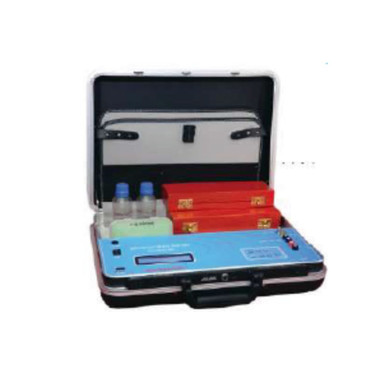Posted by Scispectrum on 22nd Aug 2025
The Unsung Hero of the Cell Culture Lab: Phosphate Buffered Saline pH 7.4 pH 7.4
Phosphate Buffered Saline pH 7.4 Behind every groundbreaking discovery in cell biology lies a foundation of meticulous techniques and carefully controlled environments. While cutting-edge technologies often take center stage, it’s the seemingly simple solutions that ensure the success of countless experiments. One such unsung hero in the cell culture lab is Phosphate Buffered Saline (PBS) at a pH of 7.4. This seemingly ubiquitous solution plays a crucial role in maintaining cell health, enabling accurate results, and facilitating a wide range of experimental procedures. This article delves into the multifaceted world of PBS pH 7.4, exploring its properties, applications, and why it’s an indispensable tool for cell biologists worldwide.
Understanding the Importance of PBS in Cell Culture
Cells grown in a laboratory setting are incredibly sensitive to their environment. Deviations from physiological conditions, such as changes in pH, osmolarity, or temperature, can stress cells, leading to inaccurate experimental results or even cell death. PBS pH 7.4 provides a stable, isotonic, and physiologically relevant environment that mimics the conditions found in the human body, ensuring optimal cell health and experimental accuracy.
The Science Behind PBS pH 7.4
PBS is a balanced salt solution containing sodium chloride (NaCl), potassium chloride (KCl), sodium phosphate (Na2HPO4), and potassium phosphate (KH2PO4). The specific concentrations of these salts are carefully calibrated to maintain an osmotic pressure similar to that of human body fluids, preventing cells from shrinking or swelling due to water influx or efflux.
The pH of PBS is meticulously adjusted to 7.4, which falls within the physiological pH range required for most mammalian cells to thrive. This pH is maintained by the buffering capacity of the phosphate salts, which resist changes in pH, ensuring a stable environment for cells even when acidic or basic reagents are added.
Versatile Applications in the Cell Culture Lab
PBS pH 7.4 is a true workhorse in the cell culture lab, playing a crucial role in various procedures:
- Cell Washing and Rinsing: PBS is used extensively to wash and rinse cells during routine cell culture maintenance, removing excess media, metabolic waste products, and detached cells. This gentle washing step is essential for maintaining a healthy cell culture environment.
- Trypsinization: Before detaching adherent cells from their culture vessels using trypsin, a proteolytic enzyme, PBS is used to wash away any residual media or serum that can inhibit trypsin activity, ensuring efficient cell detachment.
- Cell Counting and Viability Assays: PBS is used to dilute cell suspensions before counting and assessing cell viability. Its isotonic nature prevents cell damage during these procedures, leading to more accurate results.
- Transporting Cells and Tissues: PBS provides a suitable medium for transporting cells and tissues between laboratories or to different experimental setups, preserving their viability and integrity during transit.
- Immunocytochemistry and Immunofluorescence: PBS is often used as a washing buffer during immunostaining procedures to remove unbound antibodies and reduce background noise, enhancing the specificity and clarity of staining results.
Advantages of Using PBS pH 7.4
Several factors contribute to the widespread use of PBS pH 7.4 in cell culture:
- Physiological Relevance: Its isotonic and pH-balanced formulation mimics the natural environment of cells, minimizing stress and promoting optimal cell health.
- Biocompatibility: PBS is compatible with most cell types and does not interfere with common cell culture reagents or assays.
- Ease of Preparation: PBS can be easily prepared from readily available laboratory reagents, making it a cost-effective solution for cell culture labs.
- Versatility: Its wide range of applications makes it an indispensable tool for various cell culture procedures, from routine maintenance to complex experiments.
Considerations and Best Practices
While PBS pH 7.4 is generally safe and effective, certain considerations can ensure optimal results and minimize potential issues:
- Sterility: Always use sterile PBS solutions to prevent contamination of cell cultures. Sterilization can be achieved through autoclaving or filtration.
- Storage: Store PBS solutions at room temperature or refrigerated (2-8°C) to maintain their stability and prevent bacterial growth.
- Quality Control: Use high-quality reagents and follow proper preparation protocols to ensure the correct pH, osmolarity, and sterility of PBS solutions.
Conclusion: A Cornerstone of Cell Culture Success
PBS pH 7.4, though often overlooked, is a cornerstone of successful cell culture practices. Its ability to maintain a stable, isotonic, and physiologically relevant environment for cells is crucial for obtaining accurate and reliable experimental results. As cell biology research continues to advance, PBS pH 7.4 will undoubtedly remain an indispensable tool for scientists around the world, supporting groundbreaking discoveries and fueling advancements in our understanding of life at the cellular level.


